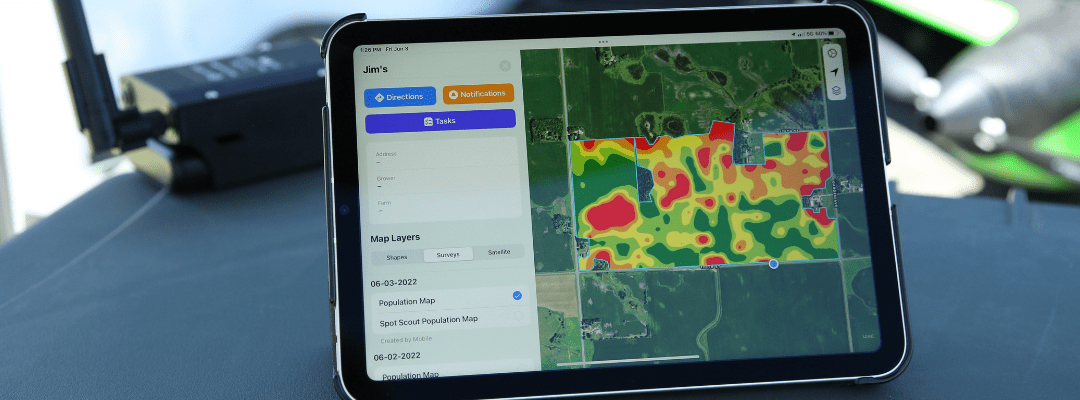Using multispectral indices can provide the most detailed insight into how crops are performing throughout the season; but for many, it can be confusing to understand the difference between the mechanism for capturing this data.
Satellite provides an ongoing overview of what’s happening with the field, as the satellites are always orbiting the earth and pulling the data based on how the light reflects from certain objects or things, like plants. Drone imagery, on the other hand, requires investment in equipment and dedicated time to fly to capture the imagery. It too operates based on how light reflects from certain objects or things.
So, what’s the difference?
Multispectral Indices from Satellite Imagery
Satellites have been capturing imagery for decades, as it can be used in many different types of applications. There are different types, and for land, ocean, and atmospheric monitoring, Sentinel satellites offer multispectral data. (FieldAgent uses Sentinel-2, which collects imagery for vegetation mapping, as well as other use cases like soil monitoring and water management)
Because satellites are continuously taking imagery, it makes it really easy to compare data from other points in time to understand key changes that are occurring. It also means that there’s a good amount of data available – almost daily collection of information that can be leveraged for analysis to understand crop health and performance.
There are some drawbacks, though. What satellite imagery makes up in convenience it loses in quality. The ground sample distance – commonly referred to as GSD – measures the distance between two pixels on the ground. When using a satellite like Sentinel-2, this GSD is captured at 10m per pixel.
What does that mean? It means that while it’s capturing imagery, it’s doing so at a very low resolution, which can make it challenging to leverage for detailed analysis that hinges on precise and accurate measurements.
The other consideration for satellite data is that it can be subjective to weather patterns; a cloudy day can drastically impact the images that it can capture.
Drone Imagery for Crop Health
Drone imagery for crop health gives more control and more accurate aerial images, albeit at a higher cost than what is found with satellite imagery.
Many sensors designed for vegetative mapping have a GSD of less than one centimeter per pixel. Yes, you read that right. One centimeter. Quite the difference from 10 meters!
That means that you can capture higher quality images, which can then be translated into detailed analytics for precise measurements and insight into crop health and performance.
Beyond that, using an ag drone system can offer a number of benefits while making sure that it fits with unique use cases. For instance, you can control when you fly – ensuring that you are capturing the data at the right time to get the measurements you need to validate performance and outcomes.
The data captured by drones goes beyond imagery. It can be translated into detailed measurements and data sets, meaning that you can get precise insights into what is happening plant by plant; helping to fuel more accurate decisions, no matter if it’s to help a grower get better results or to validate a plot trial for a new product.
Which to Choose?
Often times, satellite and drone imagery can work together to provide detailed insights into crop health and performance.
For instance, taking a look at satellite imagery can give a good indication of where problems may lie; while using an ag drone system to capture high-resolution aerial imagery can provide more detailed insight into what is happening across the field. Together, they can help to inform boots-on-the-ground priorities to drive efficiency.
Taking the first step into drone imagery can be intimidating; with many not knowing which solution works best for their needs. Starting with a small drone system with a sensor focused on capturing NDVI or NDRE indices can be a first step into high-resolution aerial imagery capture and analysis.


